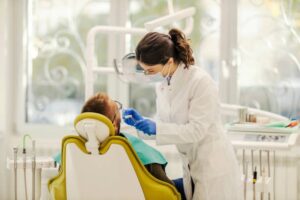Similar to humans, the oral health of domesticated pets is likewise a vital aspect of their well-being. Once this facet is poorly cared for, it can adversely affect their capability to live a long and proactive life. However, due to the influx of information about this concern, misconceptions can arise, leading to confusion and ignorance. Prevent this from taking place by learning about the common dental fallacies rampant among pets.
Pet Dental Health Information Treated with Skepticism
At-home dental care is redundant
Consequently, owners who have scheduled their pets for preventative oral care visits consider this an ideal means to replace in-house maintenance. Nevertheless, believe it or not, this health response was negated by countless veterinary dentists.
For them, this is a good choice, yet caring for your pet’s orals at home can drastically influence their overall health. In fact, sustaining a superior mouth and gums can contribute to their excellent physical condition.
Brushing the teeth does not help
Indeed, pets keen on tooth brushing are rare. A wide variety of tamed animals have feared this cleaning regimen; they actually hate it. However, this act is the golden criterion to ensure exceptional oral care and health for them.
Suppose you are either of these two owners: first, a recently entitled fur-parent, and second, a skeptical owner. In this situation, never hesitate to visit a local animal hospital in White House, TN, to gain details regarding the proper way to brush your pet’s teeth.
Every dental product is safe and effective
Fur-parents aim to provide a life they perceive as desirable for their pets. For this reason, any purchasable pet object they can lay eyes on will immediately be included in the basket. This is an effective strategy to allow your fur babies to live out the best of their life.
But, veterinarians recommend scheduling a routine pet dental checkup before securing any product since selecting the right one might differ for every species, based on many factors.
Foul breath should be ignored
Pets are notable as lick-loving creatures considering they are inclined to devour every item that captures their interest. Due to this, having a terrible breath can be their principal characteristic. However, veterinarians say that halitosis can positively indicate a mouth infection.
So, never be complacent enough if your pet holds this attribute. Instead, it is essential to have these creatures promptly arranged for cat and dog checkups to opt for a dental appointment.
Hard kibble is an excellent cleaning material
Responsible owners often feed their pets a food termed hard kibble. This is the form of consumables commonly found in stores nationwide. Most people believe this is a great way to clean their pet’s orals as they nibble on these delicacies.
Yes, this can be true at some point; however, due to a kibble’s hard consistency, these creatures tend to swallow it as a whole. Consequently, delivering no benefit at all.
Non-anesthetic dental cleaning is preferred
A number of owners get anxious once they discover that their pets could be administered anesthesia before going through comprehensive dental cleaning. Subsequently, they opt for a non-anesthetic one.
However, this option is typically debunked by veterinary professionals. Yes, there could be a range of dangers associated with this substance, yet this can help ease their pain when subjected to oral treatment.
Oral diseases are predestined phase of aging
A wide range of fur parents is frequently convinced of the myth stating that as their pets get older, they are inescapable of severe dental complications. For this reason, veterinarians proved this wrong.
They asserted that as long as your pet’s orals are correctly taken care of at a young age, they can similarly be exempted from detrimental health consequences. So, constantly see that your pet receives routine assessments and cleanings.
White teeth mean a healthy mouth
Individuals view a pet’s crystal clear and white teeth as optimal and healthy. However, a yellowish one is remarkable as dangerous and harmful. The fact is, this is a misconception commonly debunked by veterinarians.
In fact, the shade of the gums is more relevant than those of the teeth. It is a reputable indicator of potential infections that can lead to severe conditions amongst companion animals.









